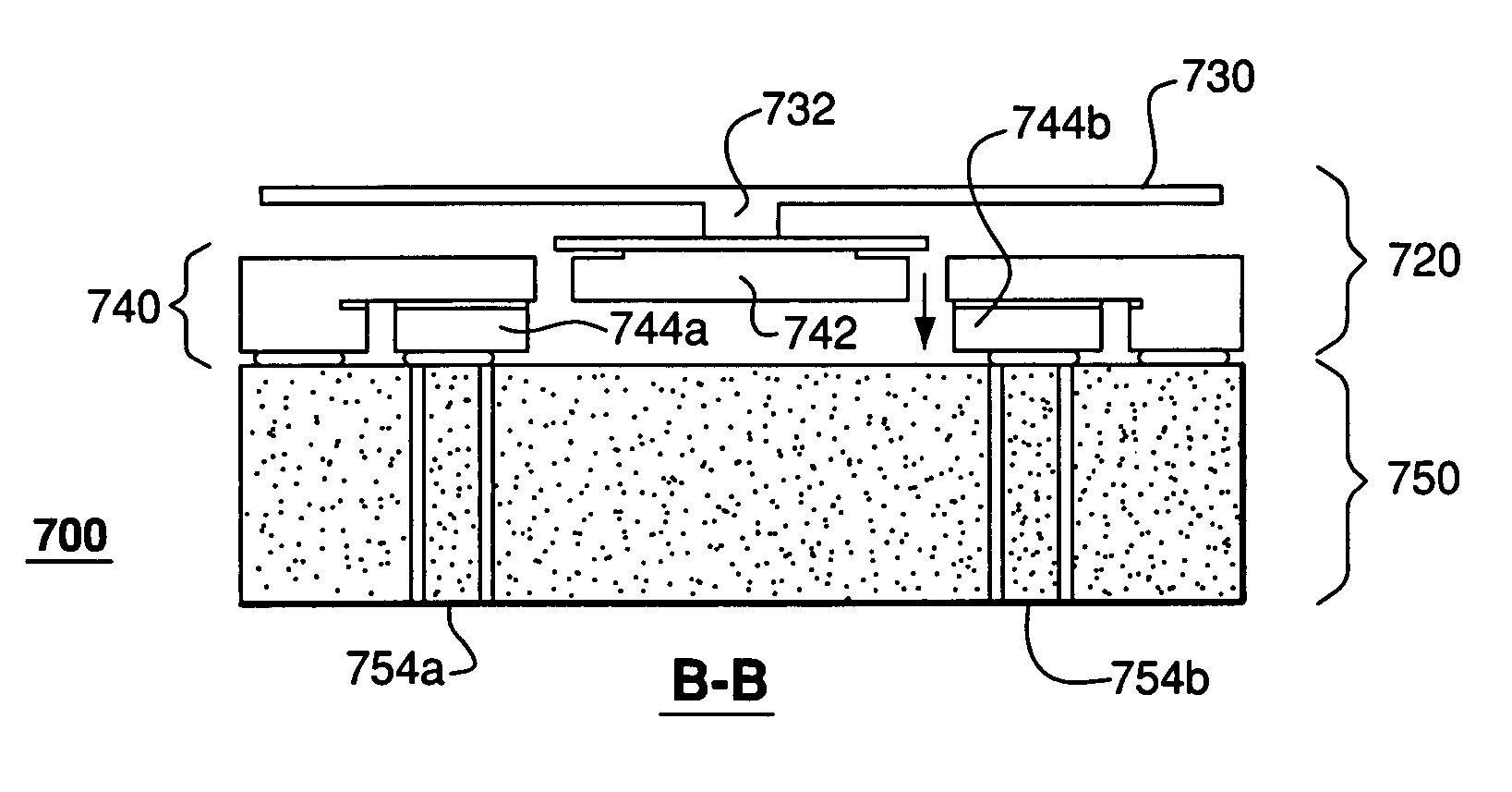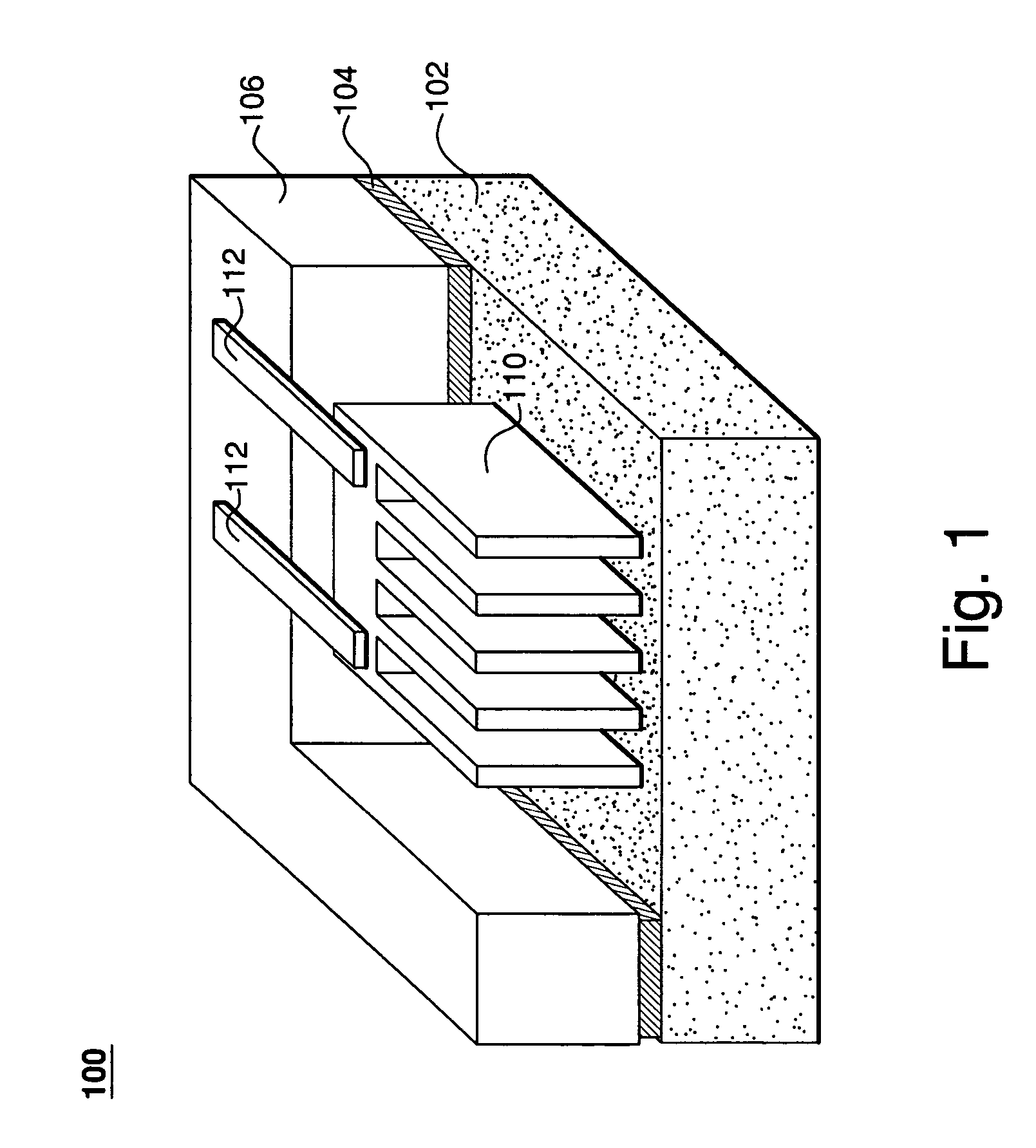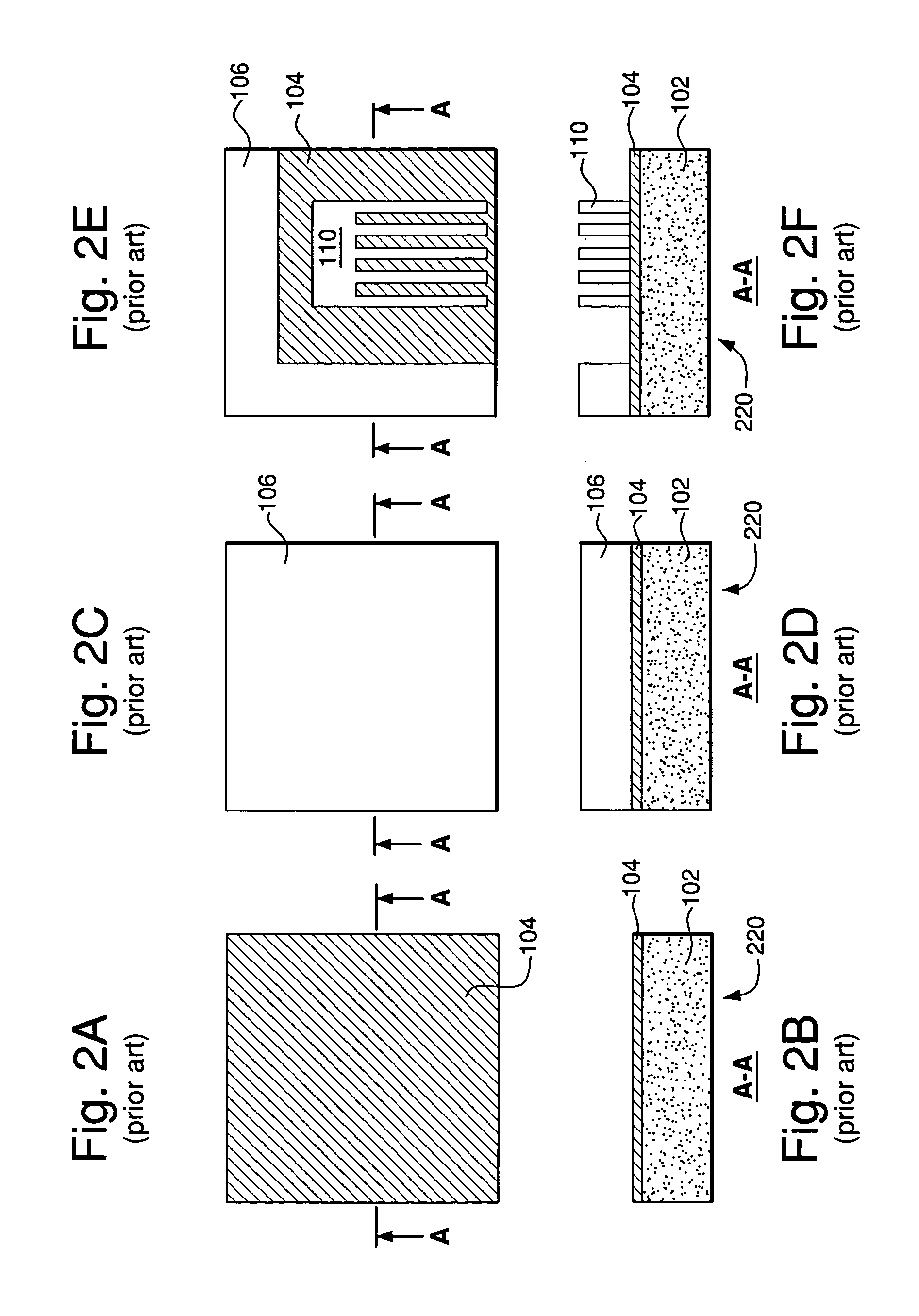Fabricating integrated devices using embedded masks
a technology of masks and integrated devices, applied in the field of integrated devices, can solve problems such as excessive local stresses, and achieve the effect of reducing the number of masks and masks
- Summary
- Abstract
- Description
- Claims
- Application Information
AI Technical Summary
Benefits of technology
Problems solved by technology
Method used
Image
Examples
Embodiment Construction
[0018] Reference herein to “one embodiment” or “an embodiment” means that a particular feature, structure, or characteristic described in connection with the embodiment can be included in at least one embodiment of the invention. The appearances of the phrase “in one embodiment” in various places in the specification are not necessarily all referring to the same embodiment, nor are separate or alternative embodiments mutually exclusive of other embodiments.
[0019]FIG. 1 shows a perspective three-dimensional view of a representative MEMS structure 100. More specifically, MEMS structure 100 includes a silicon substrate layer 102, a relatively thin silicon-oxide layer 104 deposited over the substrate layer, and a relatively thick (poly)silicon layer 106 deposited over the oxide layer. MEMS structure 100 further includes a comb-shaped electrode 110 movably connected to layer 106 by a pair of flexible bars (springs) 112. Electrode 110 can, for example, be a part of an electrostatic comb-...
PUM
 Login to View More
Login to View More Abstract
Description
Claims
Application Information
 Login to View More
Login to View More - R&D
- Intellectual Property
- Life Sciences
- Materials
- Tech Scout
- Unparalleled Data Quality
- Higher Quality Content
- 60% Fewer Hallucinations
Browse by: Latest US Patents, China's latest patents, Technical Efficacy Thesaurus, Application Domain, Technology Topic, Popular Technical Reports.
© 2025 PatSnap. All rights reserved.Legal|Privacy policy|Modern Slavery Act Transparency Statement|Sitemap|About US| Contact US: help@patsnap.com



